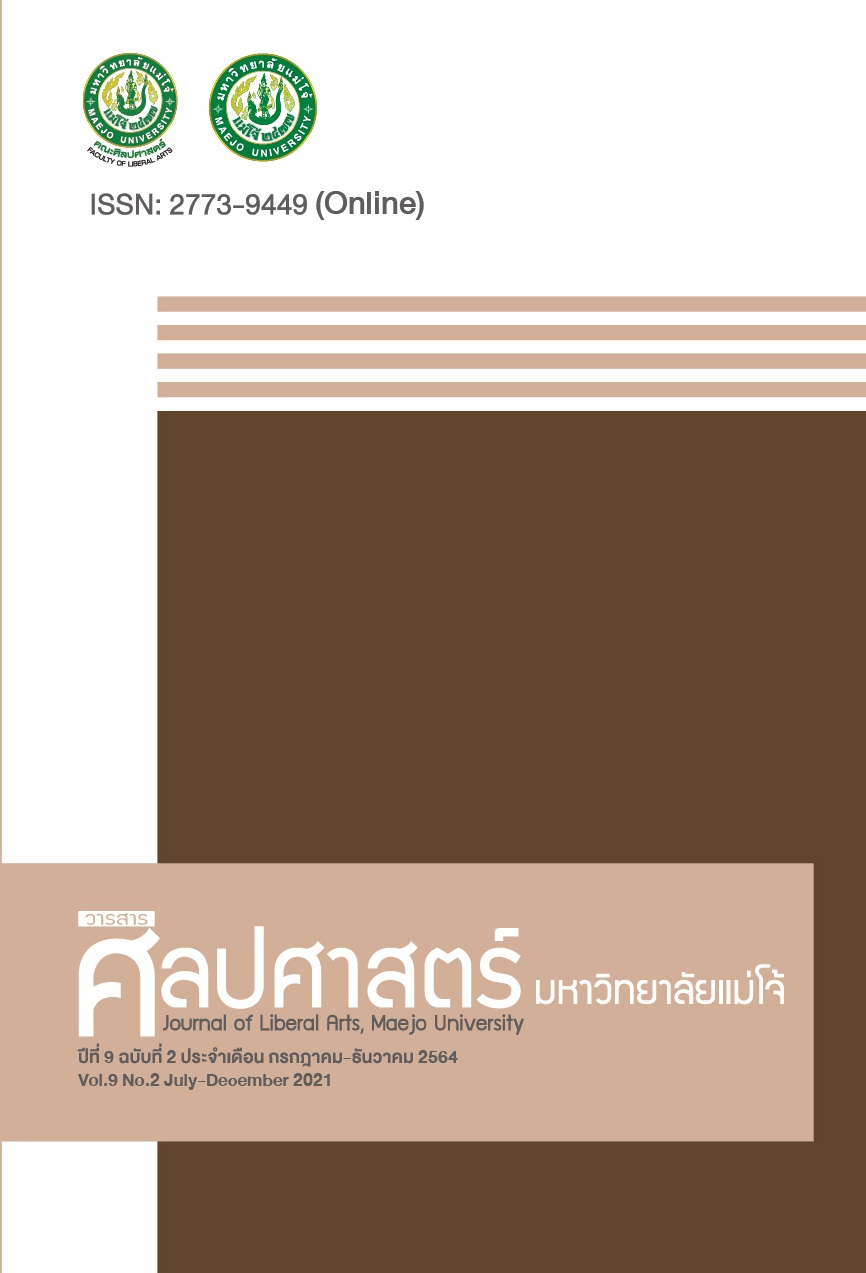ผลของโปรแกรมการออกกำลังกายด้วยการรำเซิ้งกระติ๊บประยุกต์ที่มีผลต่อการทรงตัวในนักศึกษาหญิง มหาวิทยาลัย
Main Article Content
บทคัดย่อ
งานวิจัยนี้เป็นงานวิจัยกึ่งทดลองมีวัตถุประสงค์เพื่อศึกษาผลของโปรแกรมการออกกำลังกายด้วยการรำเซิ้งกระติ๊บประยุกต์ที่มีผลต่อการทรงตัวของนักศึกษาหญิง มหาวิทยาลัย ตัวอย่างเป็นนักศึกษาหญิง สาขาวิทยาศาสตร์การกีฬา คณะวิทยาศาสตร์ มหาวิทยาราชภัฏอุดรธานี จำนวน 30 คน แบ่งเป็นกลุ่มทดลอง จำนวน 15 คน และกลุ่มควบคุม 15 คน เครื่องมือวิจัย ได้แก่ 1) โปรแกรมการออกกำลังกายด้วยการรำเซิ้งกระติ๊บประยุกต์ 2) แบบทดสอบการทรงตัวแบบอยู่กับที่ ได้แก่ การยืนขาเดียว การยืนขาข้างเดียว-ลืมตา การยืนข้างเดียว-ปิดตา และการทรงตัวแบบเคลื่อนที่ ได้แก่ star excursion balance test การทดสอบแบ่งเป็น 3 ระยะ ได้แก่ ก่อนการฝึก, หลังการฝึก 4 สัปดาห์, และหลังการฝึก 8 สัปดาห์ โดยใช้เวลาในการฝึก 3 วัน/สัปดาห์ ครั้งละ 60 นาที วิเคราะห์ข้อมูลโดยใช้ ค่าเฉลี่ย, ส่วนเบี่ยงเบนมาตรฐาน, ค่าความแปรปรวนแบบวัดซ้ำ ที่ระดับนัยสำคัญทางสถิติที่ 0.05 ผลการวิจัย กลุ่มทดลองมีการทรงตัวแบบอยู่กับที่และแบบเคลื่อนที่ดีกว่าก่อนทดลองและดีกว่ากลุ่มควบคุมอย่างมีนัยสำคัญทางสถิติที่ระดับ 0.05 จึงสรุปได้ว่าโปรแกรมการออกกำลังกายด้วยการรำเซิ้งกระติ๊บประยุกต์สามารถพัฒนาการทรงตัวของนักศึกษาหญิงได้
Article Details
เอกสารอ้างอิง
Chantharatanakun, W. (2003). Exercise during working age. Nonthaburi: Health Fitness Division, Department of Health, Ministry of Public Health.
Gauchard, G. C., Jeandel, C., & Perrin, P. P. (2001). Physical and sporting activities improve vestibular afferent usage and balance in elderly human subjects. Gerontology, 47(5), 263-270. doi: 52810
Howell, Shore, Hanson, & Meehan. (2016). Evaluation of postural stability in youth athletes: the relationship between two rating systems. The Physician and Sports medicine. 44(3): 304 – 310.
Johnson BL, Nelson JK. (1979). Practical measurements for evaluation in physical education. 4th Edit. Minneapolis: Burgess,
Khunthong, N. (2011). Effects No Ra Training on strength and stability in the elderly. Bachelor of Arts Thesis (Physical Education). Bangkok: Graduate School. Srinakharinwirot University.
Laophosri, M and et al. (2013). Effects of Thai dance on balance in Thai elderly. Chula Med J. 62 (2): 345 – 357.
Magnus,k.k.,Anders, N., & Caroline,k. (2008). Physical activity, muscle function, falls and fractures. Food & Nutrition Research. 1-7.
Miller, D.K. (2013). Measurement by Thy Physical Educator Why and How. 7th ed. McGraw-Hill Higher Education London.
Paloski el at (2006). Destabilization of human balance control by static and dynamic head tilts. Gait & Posture 23(3):315-323.
Plisky PJ, Rauh MJ, Kaminski TW, Underwood FB. (2006). Star Excursion Balance Test as a predictor of lower extremity injury in high school basketball players. Journal of Orthopedic & Sports Physical Therapy. 36(12):911-9.
Sawangjaithum, K and et al. (2018). The effects of retro dancing exercise on physical fitness and balance in women with metabolic syndrome. Journal of Physical Therapy. 40(3): 120 – 133.
Sriraksa C, (2018). Effects of Isaan dance on physical performance and quality of life in Thai elderly. Chula Med J. 62 (2): 211 -222.
Trojian TH, McKeag DB. (2006). Single leg balance test to identify risk of ankle sprains. Br J Sports Med. 40(7):610-613

